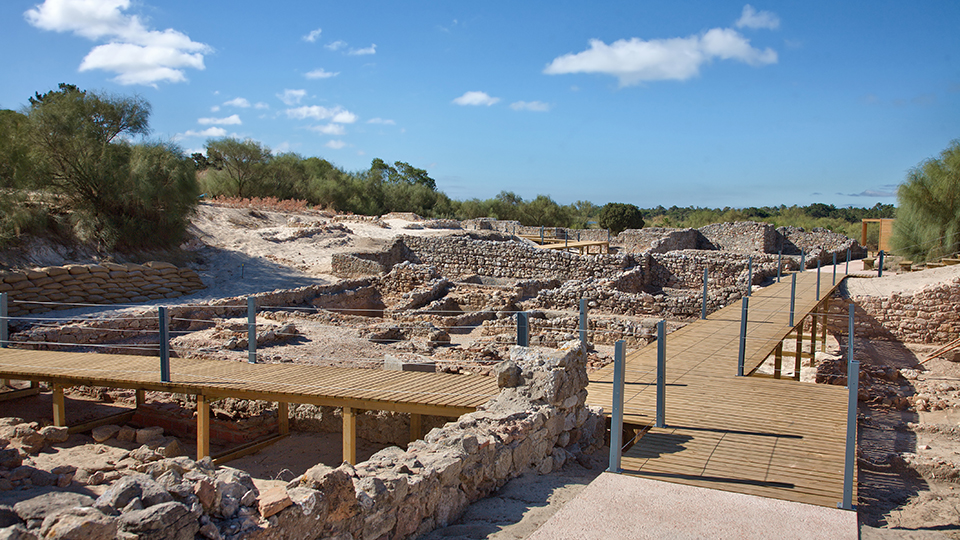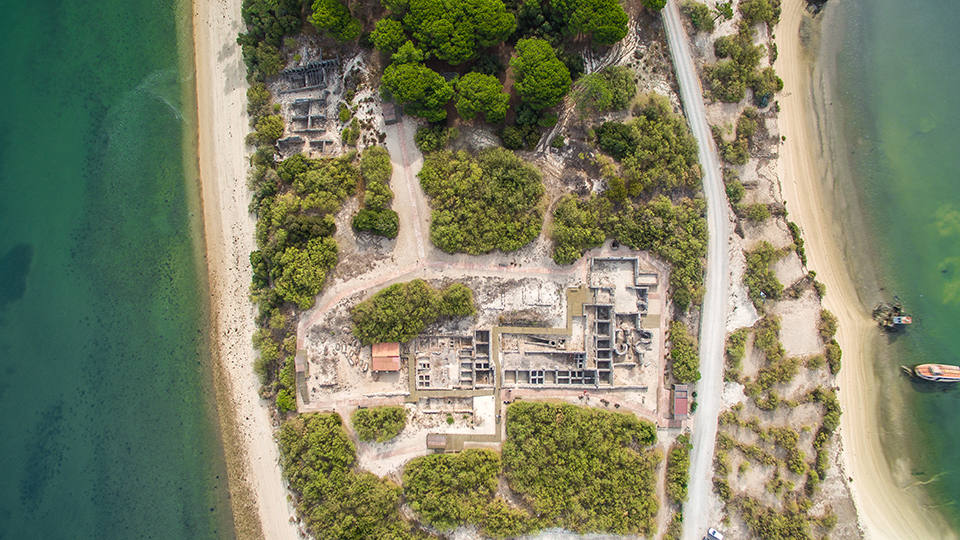| Roman Ruins of Tróia |
|---|
 |
| The Roman Ruins of Tróia, classified as National Monument since 1910 and inscribed in the World Heritage Tentative List in 2016, are the largest fish-salting and fish sauce production complex known in the Roman Empire. Since the 16th century, they have been mentioned by people visiting the area and have had several campaigns of excavation, the first of which having taken place in the 18th century, ordered by the future queen D. Maria I. Later on, in the 19th and 20th centuries, major excavations were promoted at the site, by the first directors of the nowadays known as National Museum of Archaeology, such as Leite de Vasconcelos, Manuel Heleno and Fernando de Almeida. These excavations brought to light fish-salting workshops, including several wells, the baths, a residential area, a rota aquaria, a mausoleum and a paleo-Christian basilica besides several necropolis. In the scope of a protocol celebrated in 2005 with the goal of safeguarding, recovering, restoring and enhancement of these ruins, between the Portuguese Government and Troiaresort, the touristic company hired an archaeology team working in this site since 2006. |
 |
| Location | Tróia, Grândola, Portugal |
|---|---|
| Period | Roman Imperial (1st century AD - 6th century AD) |
| Dates | 1st - 15th April 2022 (apply for 1 or 2 weeks) |
| Accommodation | Shared house |
| Working Hours | 8am - 1pm (excavation Mon - Fri) 4pm - 7pm (lab and workshops Mon - Fri) Saturdays: Free day Sunday: Field trip |
| Programme | - Excavation and recording of archaeological and geological contexts;
- Laboratory work; - Archaeological survey; - Workshops on archaeological methods, classification of Iron Age pottery and environmental archaeology; - Field trips to national heritage sites. |
| Fee | 75£/day, including:
- Shuttle from/to Lisbon Airport - Full room and board - Excavation and lab materials - Workshops - Fied trips - Application fee - Administrative costs - Fees DO NOT INCLUDE airfare |